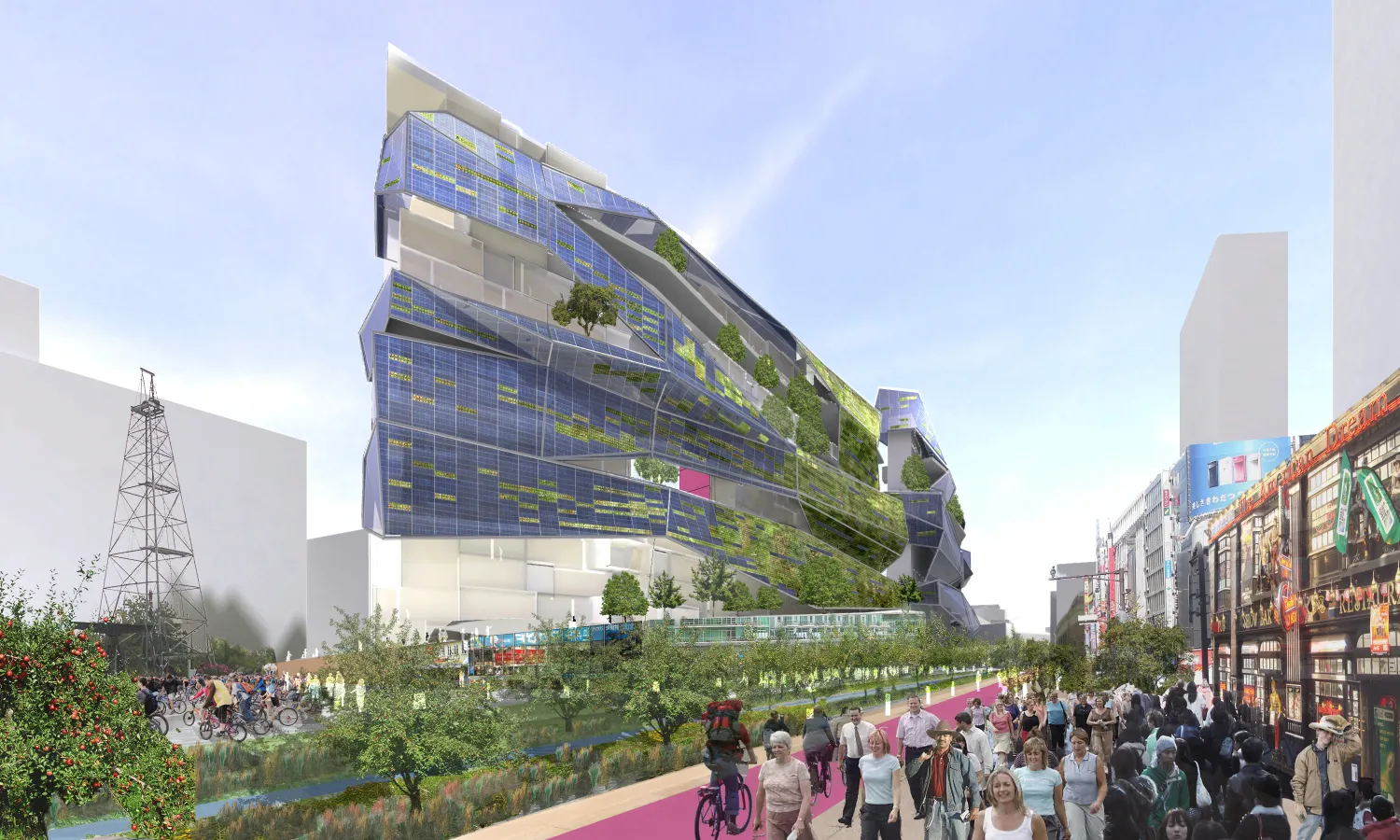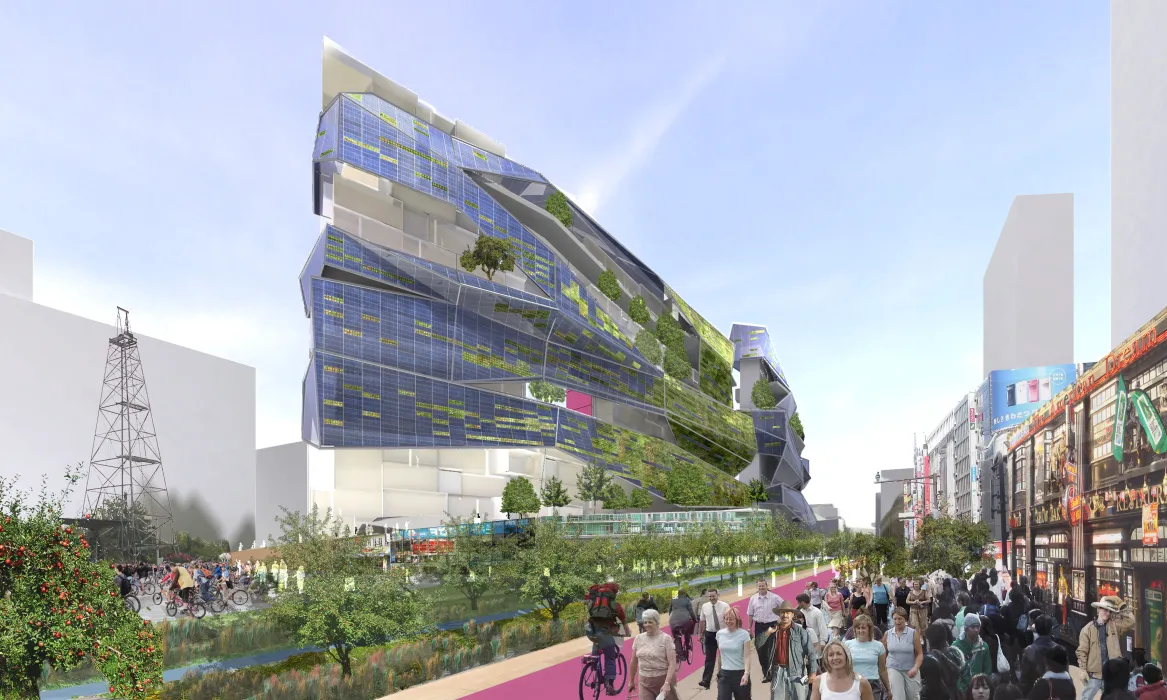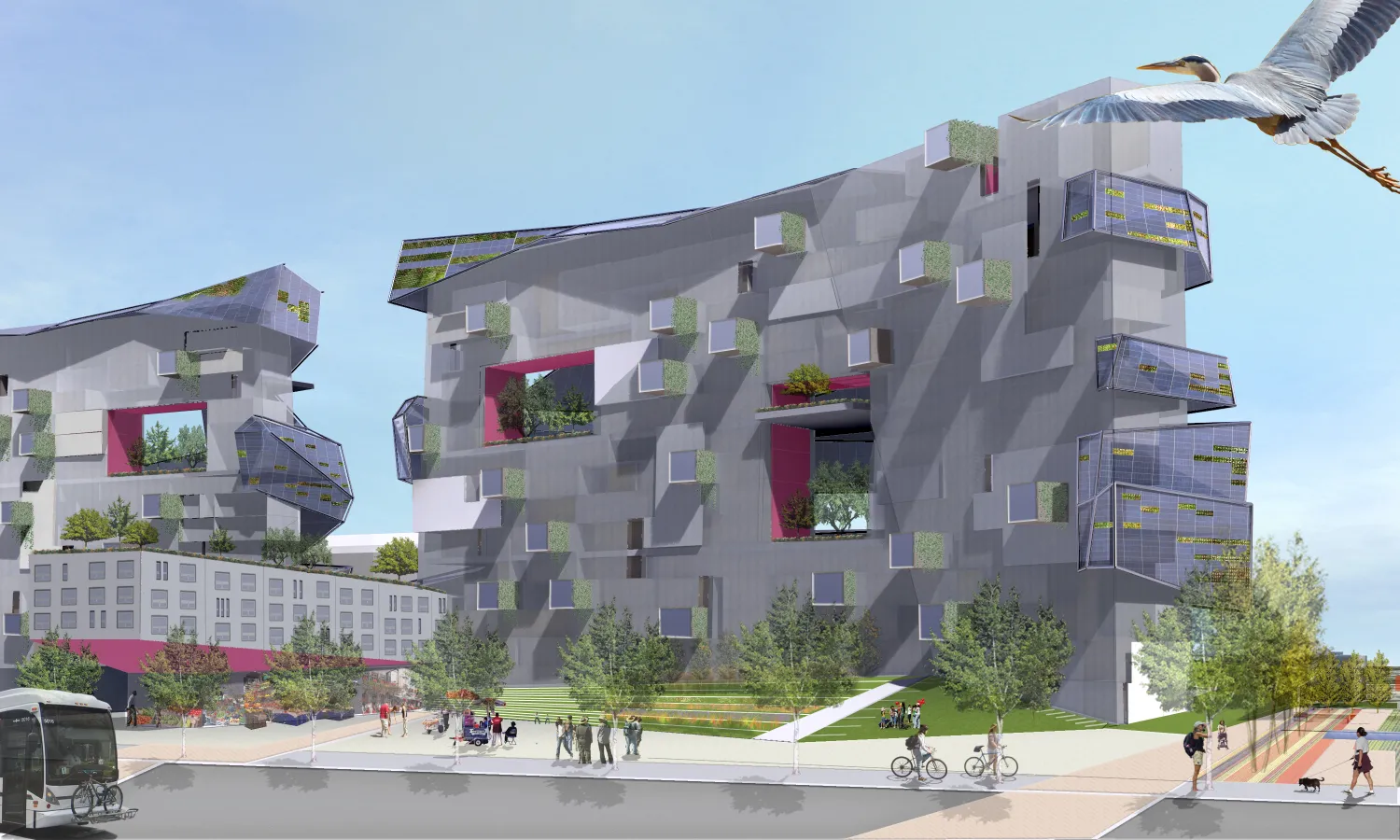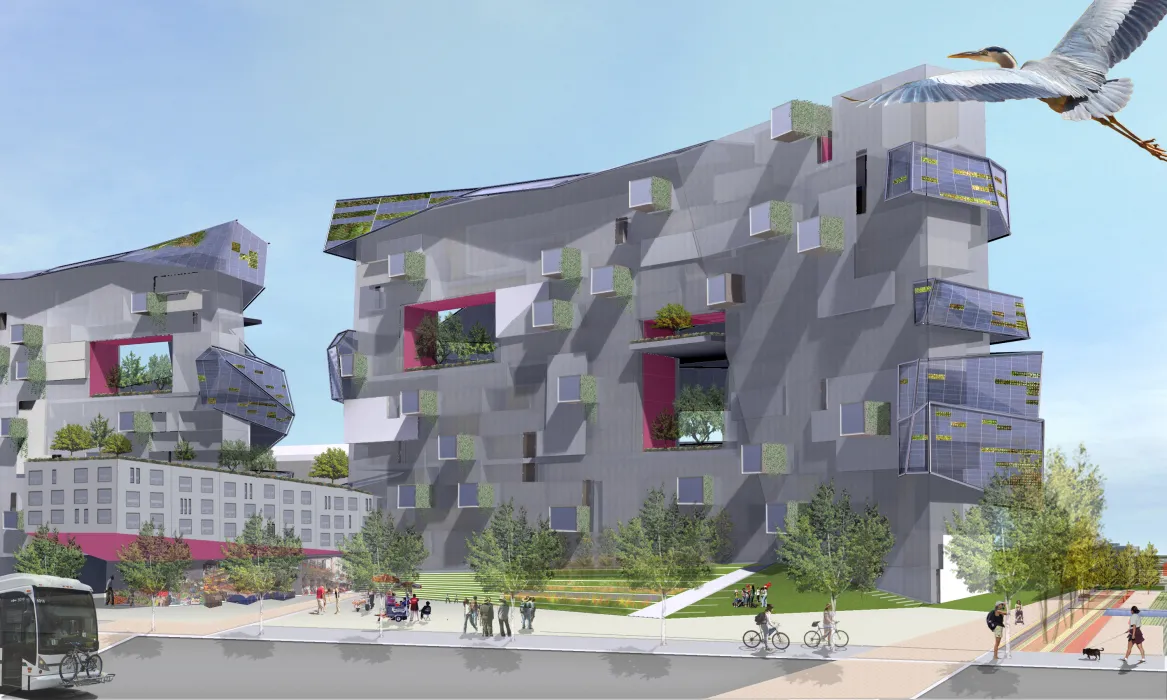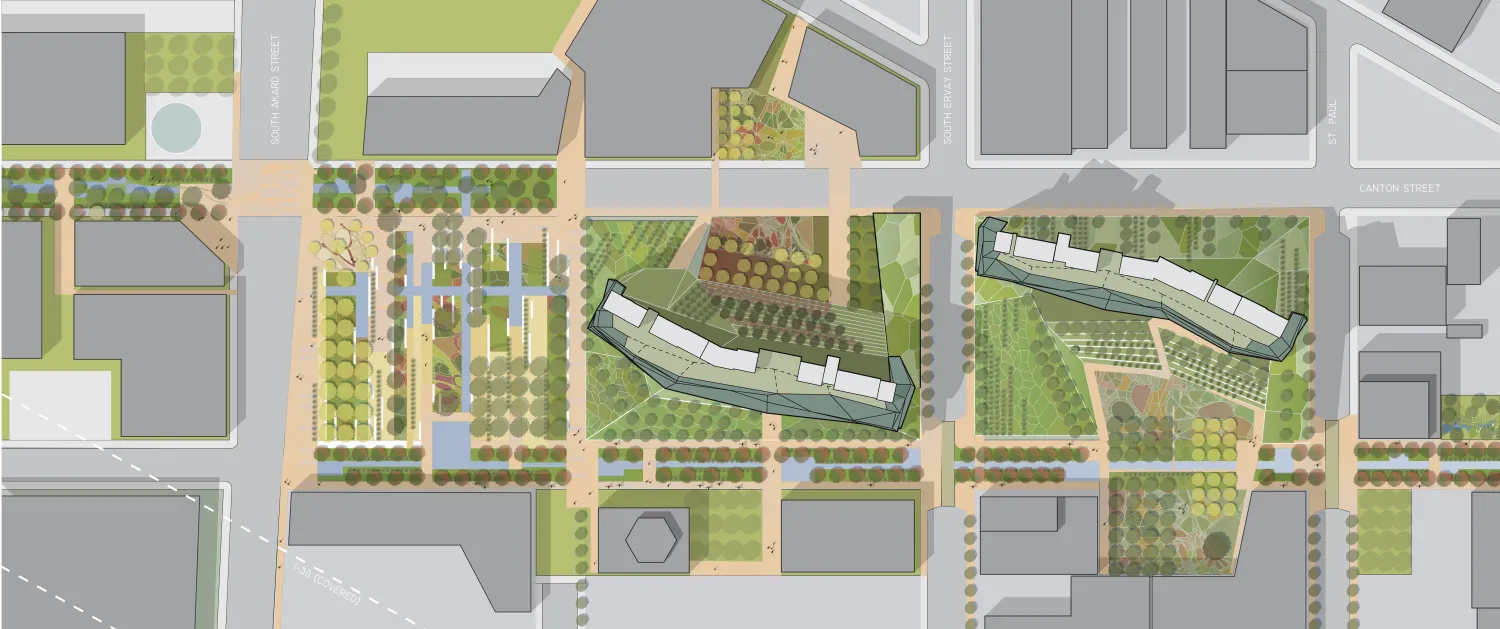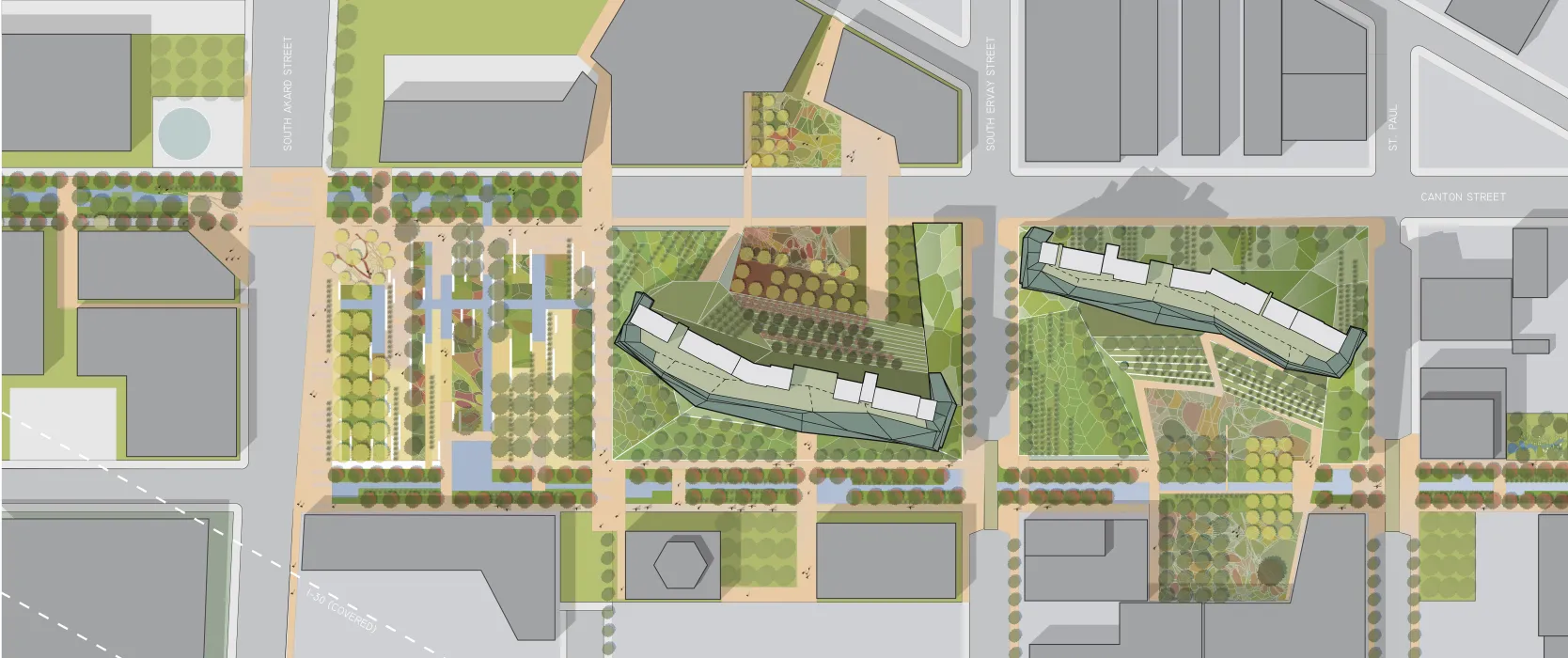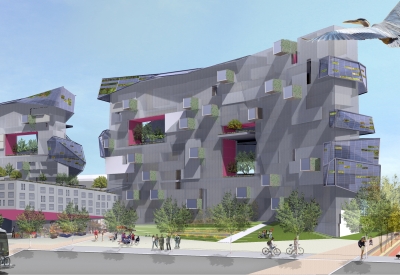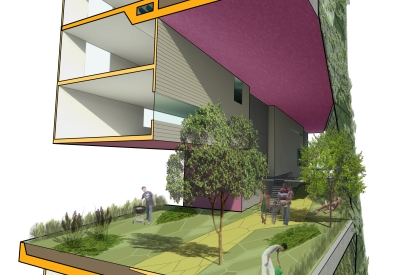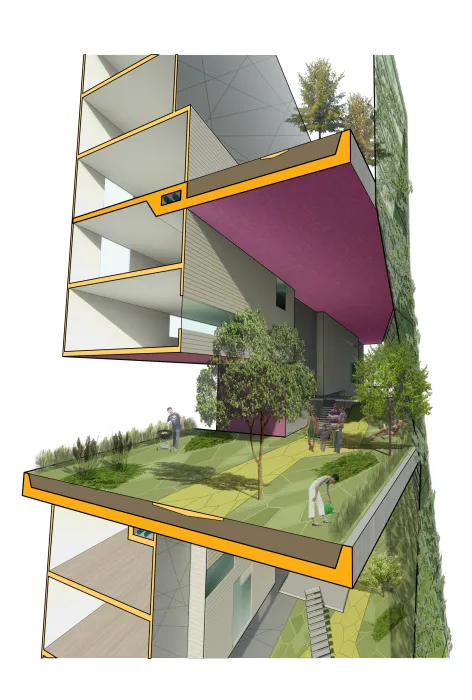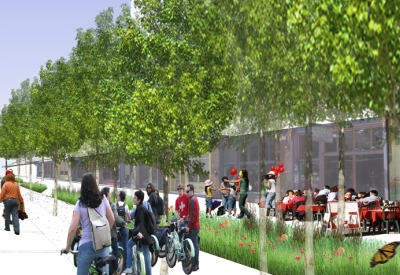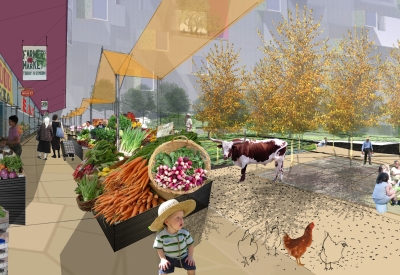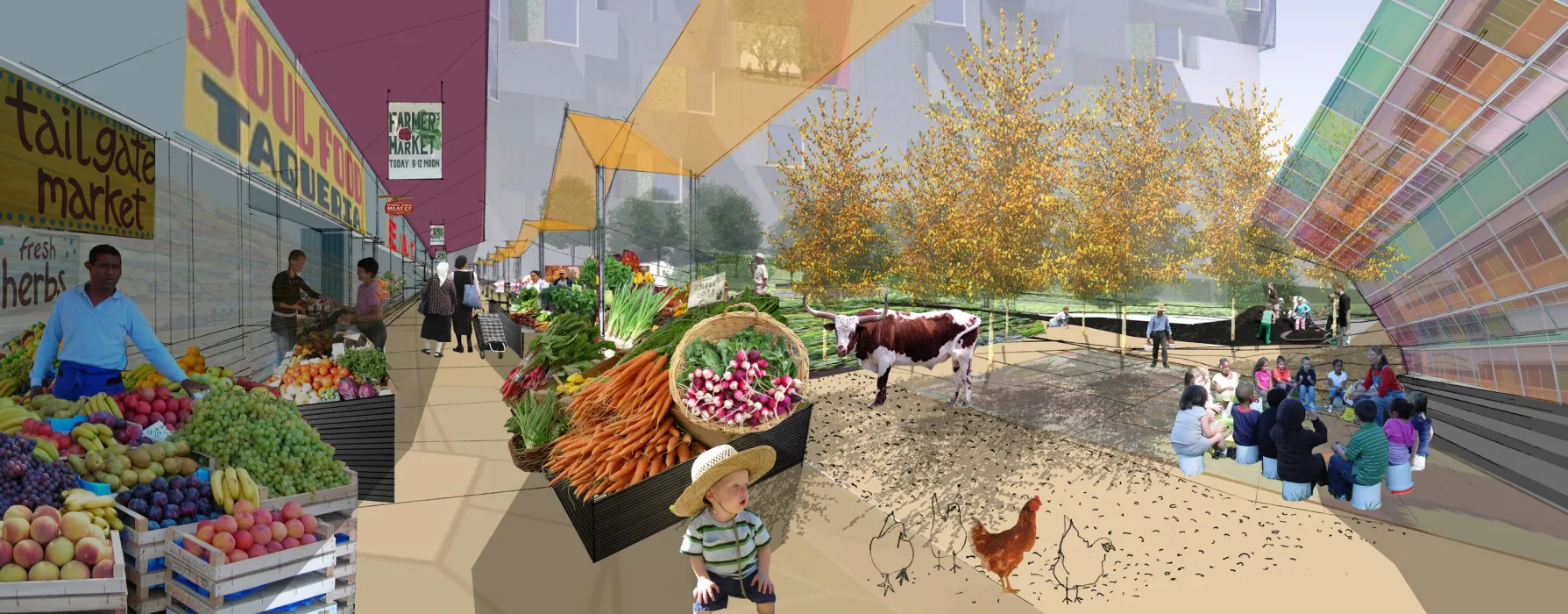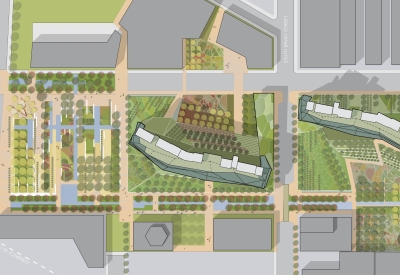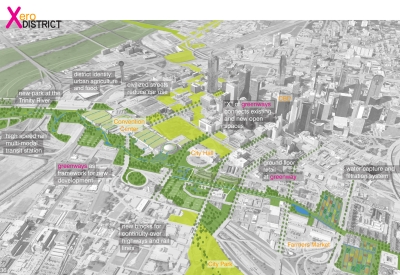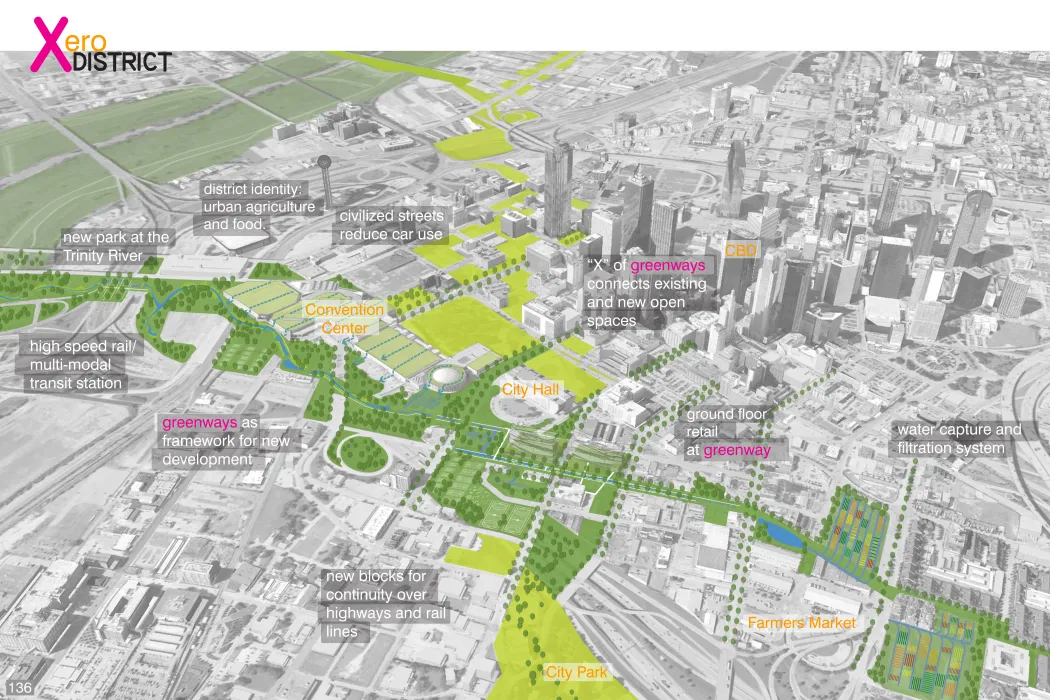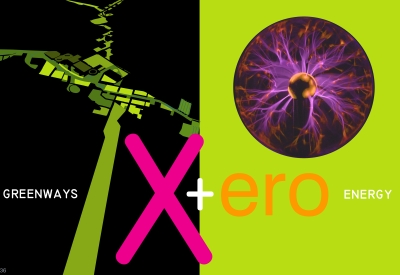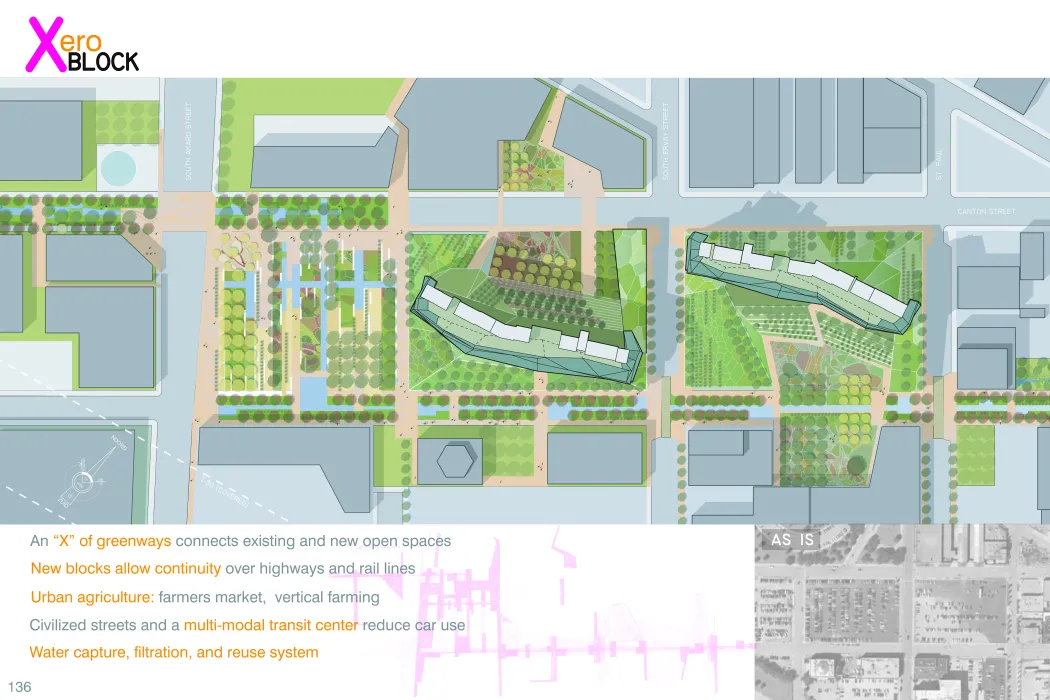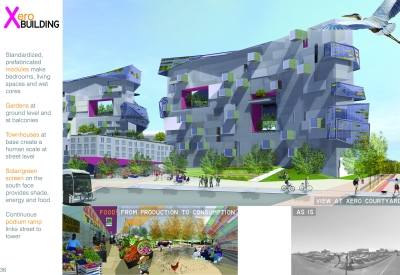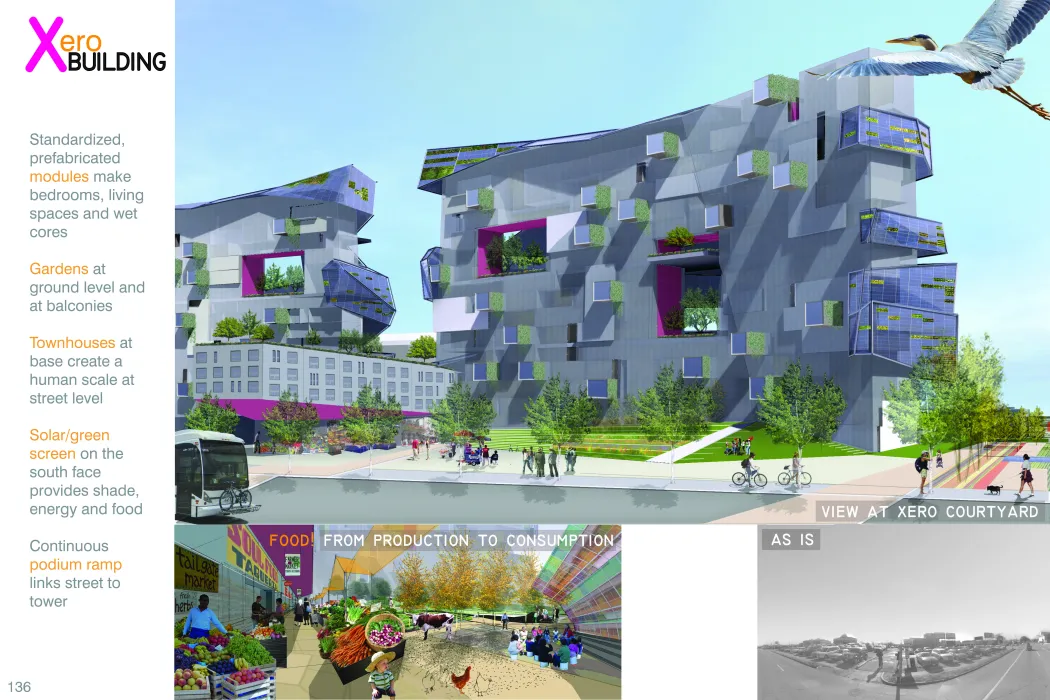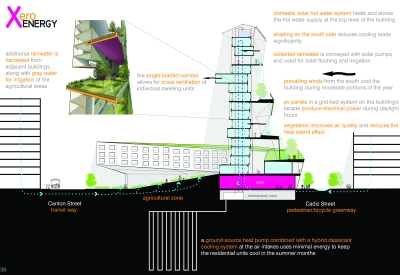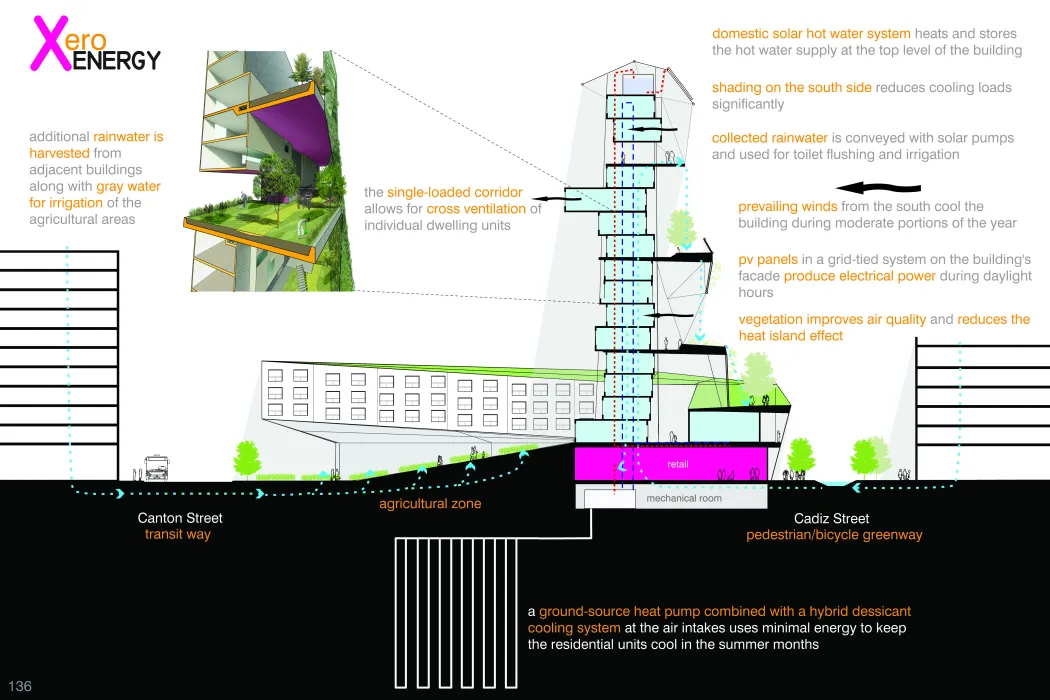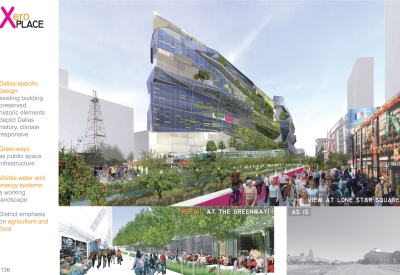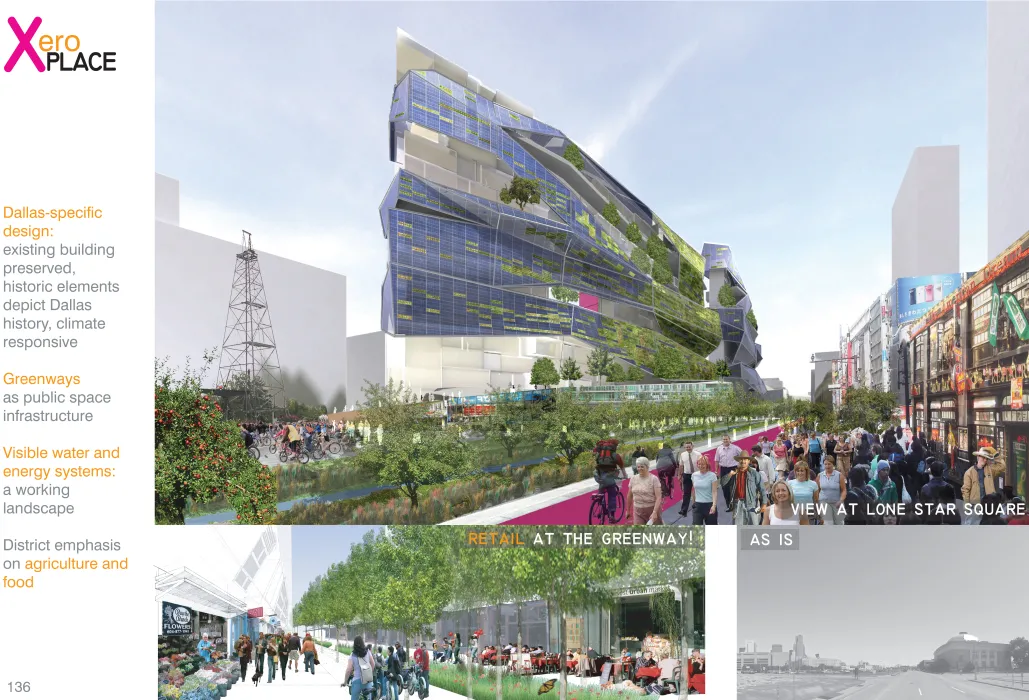Dallas TX | Unbuilt
XERO Project envisions a high-density, zero-energy, agriculturally oriented pair of buildings on the site of existing surface parking lots in a derelict district adjacent to Dallas City Hall. This project is about civilizing city streets through the use of greenways and creating high-density housing in the middle of the city. By filling in the vast emptiness, making connections with the surrounding neighborhoods, addressing extreme weather and street conditions, and providing a clear focus, XERO creates a place that Dallas can value and use.
XERO Project, a proposal for an "X" of greenways and zero-energy building design in downtown Dallas, earned one of three first-place prizes in the Re:Vision Dallas design competition on May 28, 2009. The juried competition—led by The City of Dallas and Urban Re:Vision in partnership with Central Dallas CDC and BC Workshop—sought visionary ideas in sustainable urban and architectural design by asking the question, "What if one block in Texas became the sustainable model for the world?"
The competition team also met with the Central Dallas CDC to present their design for the most sustainable district in America.
Greenways and Water
Rather than simply placing a single building in the middle of a neglected space, the conceptual reach extends beyond the property line into the larger city. Intersecting greenways pieced together from open space and disused lots set up a framework for future development and connect existing but disparate public amenities, such as the Farmer's Market and the Trinity River.
At the center of the greenways’ "X", Lone Star Square will function as the public heart of the new food/agriculture district, with orchards, garden plots, and historical elements from the city's past. Running through the system of greenways are a series of water features that filter harvested rainwater and convey it in a stream to the agricultural fields to be used for irrigation.
Energy
The zero-energy building has three main components:
- A ground level courtyard for agriculture and public open space
- A spiraling base with micro-retail at street level with townhouses above.
- A tower with optimal solar orientation, with residential units on the north side and planted screens and PV panels on the south.
The street level is a vibrant pedestrian- and bicycle-friendly environment. The building’s superior energy performance is made possible by through-ventilation in housing units, rainwater collection, graywater reuse, skip-stop elevators, and climate control systems connected to a ground-source heat pump and hybrid desiccant system.
Urban Agriculture
As a complement to neighboring arts and historic areas, the XERO District is focused on urban agriculture and food. Public orchards, community gardens, private planter boxes, food stalls, and locally supplied restaurants contribute to the district character and buzz. To bring food grown within the greenways and courtyards to market, the street level of the new residential buildings is lined with an array of micro-retail spaces—small, inexpensive stores and stalls where the district’s urban farmers will sell and serve what they produce.
In addition to the large agricultural areas at street level, a range of common spaces on the south face of the tower will provide planting boxes for individual use. The integration of agriculture with daily life provides a unique educational opportunity for children within the district, who would be able to attend after-school programs focused on teaching them how to grow their own food.
Project Details
Dallas, TX
United States
